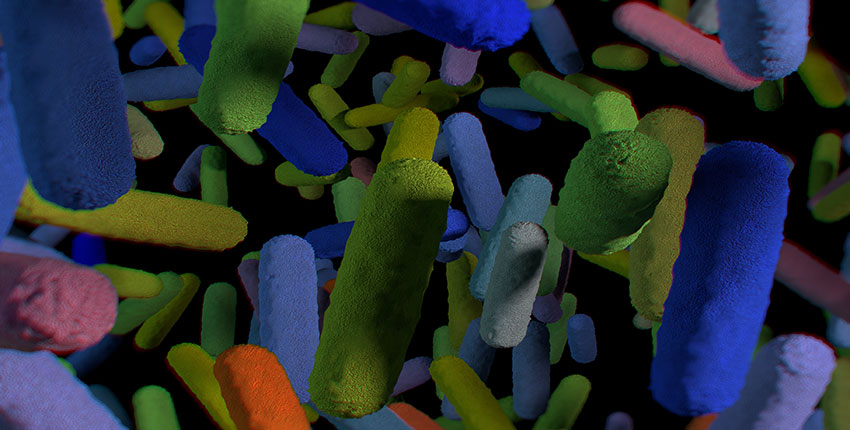Microbial Fingerprinting
In a first, scientists map the genetic diversity of microbes residing in the human gut and mouth
In a first, scientists map the genetic diversity of microbes residing in the human gut and mouth

How many stars are there in the observable universe? It was once deemed an impossible question, but astronomers have gleaned an answer—about one billion trillion of them.
Now, scientists at Harvard Medical School and Joslin Diabetes Center have embarked on what could be a similarly daunting quest: How many genes are there in the human microbiome?
In a study published Aug. 14 in the journal Cell Host & Microbe, a team of microbiologists and bioinformaticians offer a first glimpse of the array of genes that make up the bacterial universe residing in each of us.
The findings thus far: There may be more genes in the collective human microbiome than stars in the observable universe, and at least half of these genes appear to be unique to each individual—a diversity far exceeding the researchers’ expectations.
The research is believed to be the largest analysis of its kind to date and the first one to include DNA samples from bacteria that reside both in the mouth and the gut. Past studies have focused on one or the other.
Even so, the work marks only the beginning of efforts to analyze the entire genome of the human microbiome.
“Ours is a gateway study, the first step on a what will likely be a long journey toward understanding how differences in gene content drive microbial behavior and modify disease risk,” said study first author Braden Tierney, a graduate student at Harvard Medical School.
Scientists estimate that the human microbiome—the collective body of microbes that populate our guts, mouths, skin and other parts of the body—contains trillions of bacteria, most of them harmless, many beneficial and some disease causing. Mounting evidence has revealed the role of these microbes as powerful modulators of disease and health. Changes in both bacterial count and bacterial content have been linked to development of conditions ranging from garden variety dental caries and gut infections to more serious ones, including chronic inflammatory bowel disease, diabetes and multiple sclerosis.
Most research to date has focused on mapping the types of bacteria that inhabit our bodies in an effort to determine whether and how the presence of a given bacterial species might affect disease risk. By contrast, the new research delves far deeper, looking at the genes that make up the various microbial species and strains.
Studying bacterial species alone is bound to provide only partial clues into these microorganisms’ role in disease and health, the researchers say. Given that genetic content varies greatly between the same microbes, understanding how and whether individual microbial genes affect disease risk is just as important.
“Just like no two siblings are genetically identical, no two bacterial strains are genetically identical, either,” said study co-senior author Chirag Patel, assistant professor of biomedical informatics at Harvard Medical School’s Blavatnik Institute. “Two members of the same bacterial strain could have markedly different genetic makeup, so information about bacterial species alone could mask critical differences that arise from genetic variation.”
Read full article in HMS News
© 2025 by the President and Fellows of Harvard College